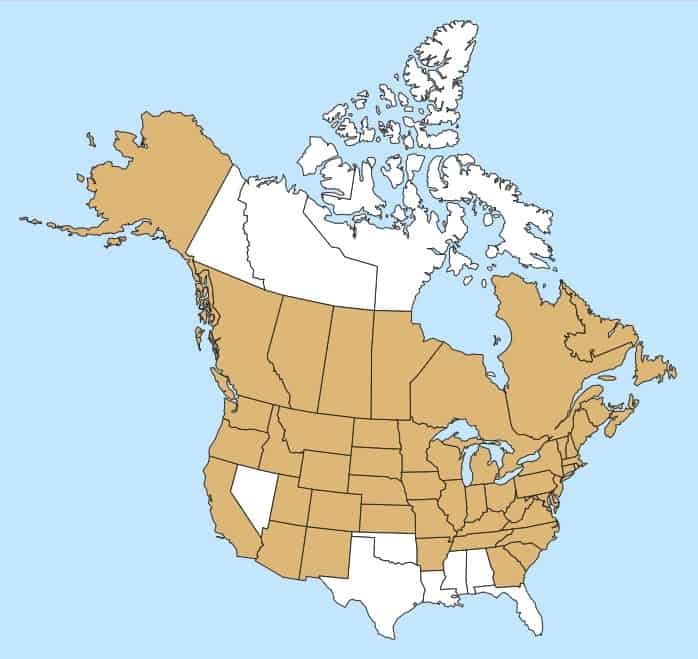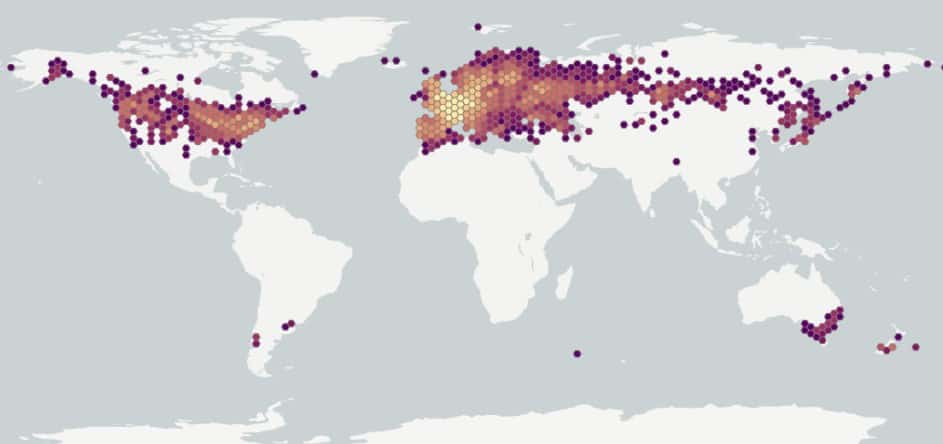Silene latifolia
Overview
Aperçu
Regulation :
Remarques Réglementation:
- CFIA Weed Seeds Order - Class 3: Secondary Noxious Weed Seeds
Regulation Notes:
Distribution :
Répartition :
Native to northern Africa, parts of temperate Asia and Europe (USDA-ARS 2021). Naturalized in other parts of temperate Asia, Australia, New Zealand, North America and southern South America (USDA-ARS 2021). Abundant across the United States except for some southern states (Kartesz et al. 2015; USDA-NRCS 2021). Occurs across Canada except for the Yukon, Nunavut and the Northwest Territories (Brouillet et al. 2010+).
Habitat and Crop Association :
Habitat et Cultures Associées :
Cultivated fields (especially legume forage crops and small grain crop), gardens, pastures, orchards, fencerows, old fields, railway lines, roadsides and disturbed areas (McNeill 1977; Darbyshire 2003). Historically, this species was recorded as infesting 50% of Medicago sativa subsp. sativa (alfalfa) acreage in Wisconsin and 30% of the legume acreage in northeastern United States and increasing in abundance (McNeill 1977).
Economic Use, cultivation area, and Weed Association :
Utilisation économique, zone de culture et association de mauvaises herbes :
Duration of Life Cycle :
Durée du cycle vital:
Biennial or perennial
Dispersal Unit Type :
Type d’unité de dispersion :
Seed
General Information
RENSEIGNEMENTS GÉNÉRAUX
Silene latifolia prefers full sun and rich, well-drained soils (McNeill 1977). This species reproduces mainly by seed, producing up to 24,000 seeds per plant, but can also propagate vegetatively from root fragments (McNeill 1977).
.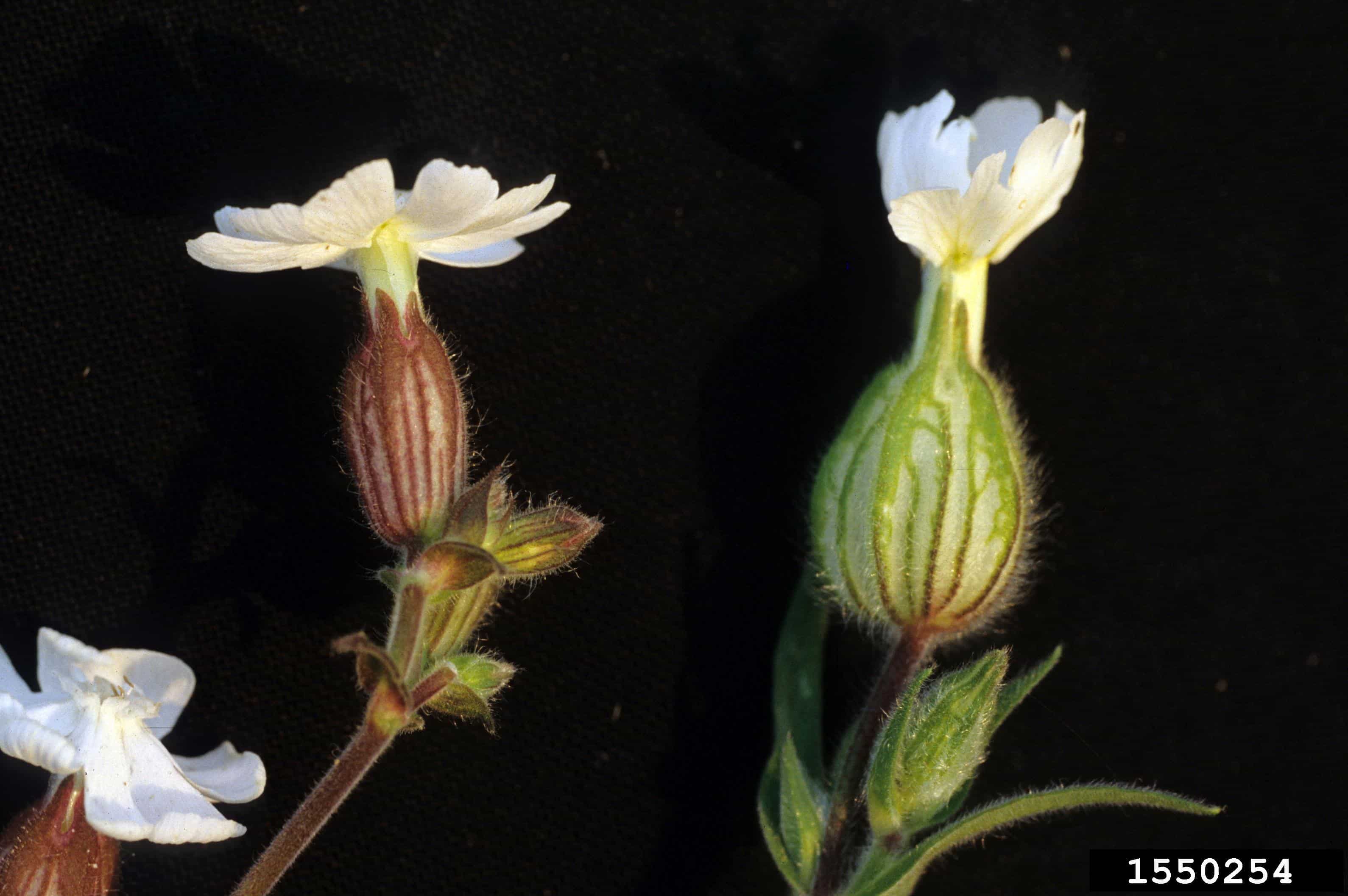
Silene latifolia flowers (Ohio State Weed Lab , The Ohio State University, Bugwood.org)
Identification
Identification
-
Capsule
Size
- Capsule length: 10.0 – 20.0 mm; width: 8.0 – 15.0 mm (FNA 1993+)
Shape
- Capsule is egg-shaped
Surface Texture
- Surface is smooth
Colour
- Capsule is shiny straw yellow coloured
Other Features
- Capsule is shiny green when immature
- Capsule disperses the seeds through opening by 5 notched, tooth-like valves (FNA 1993+)
-
Seed
Size
- Seed length*: 1.0 – 1.6mm; width: 0.9 – 1.3 mm
*Note: minimum and maximum of 10 seeds in a normal range of this species using image measurement (ISMA 2020)
Shape
- Seed D-shaped or kidney shaped, inflated in edge view
Surface Texture
- Surface is stellate grooved reticulate with papillate tubercles in the interspaces
- Tubercles are randomly arranged
Colour
- The seed is dark red with thick wax-like coating, appears yellowish grey or white coloured
- Immature seeds are orange, red or reddish-brown coloured
Other Features
Hilum & Hilum area
- The hilum is in the middle of the straight edge of the seed
- Hilum opening is generally a round hole
- A collar extends one-half to two-thirds around the hilum opening
- The collar is grooved reticulate texture, with mixed square and rectangular interspaces
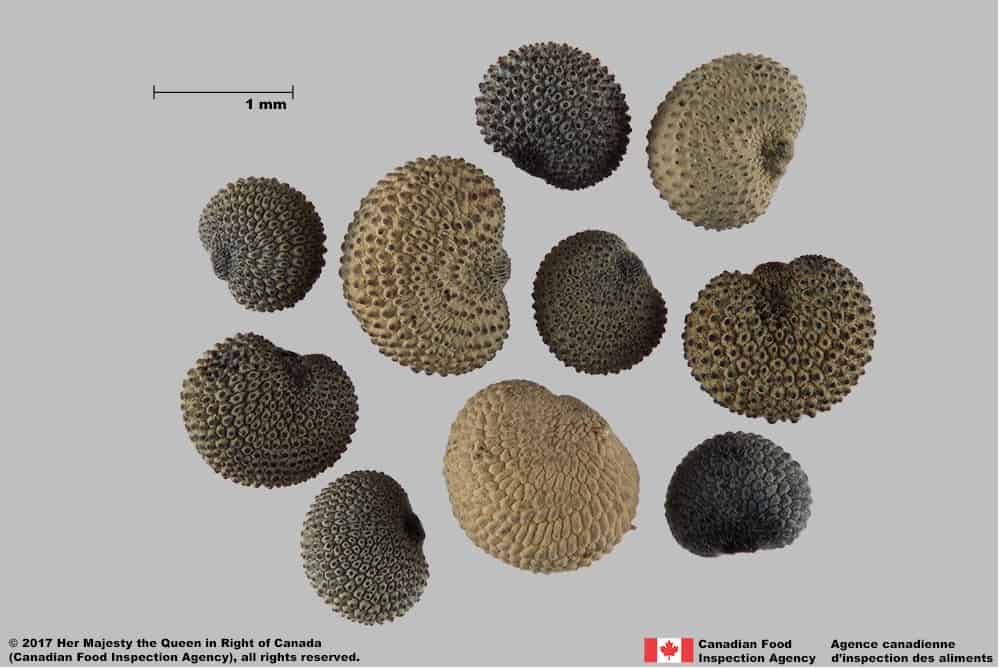
Silene latifolia (white cockle) seeds

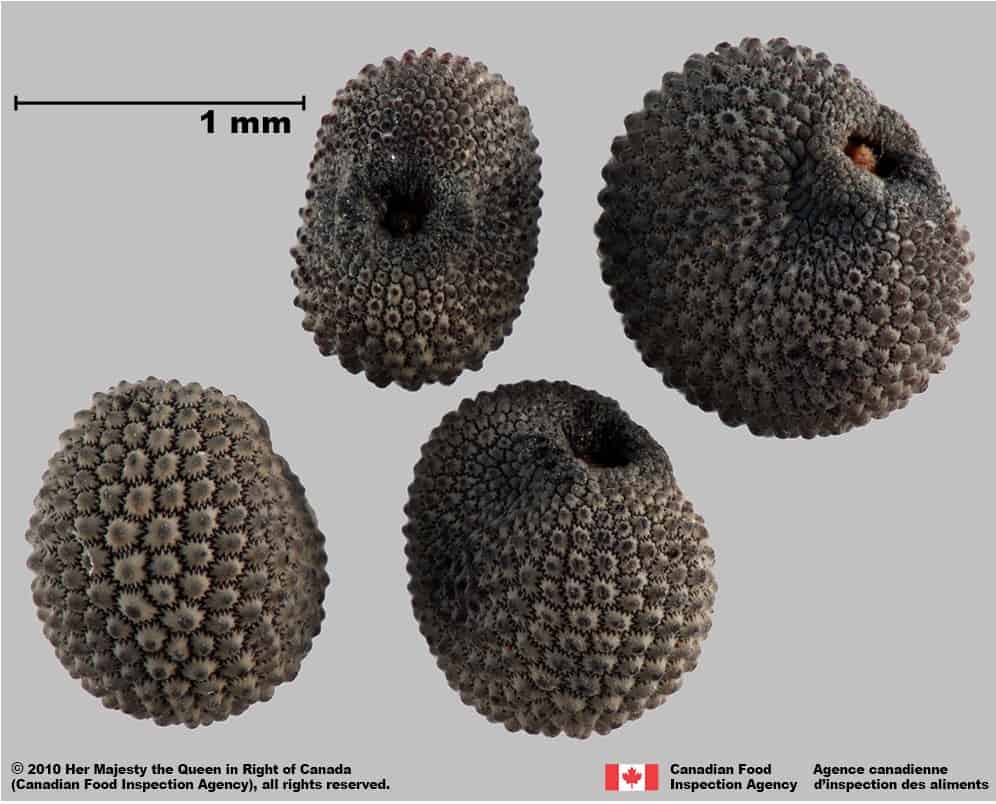
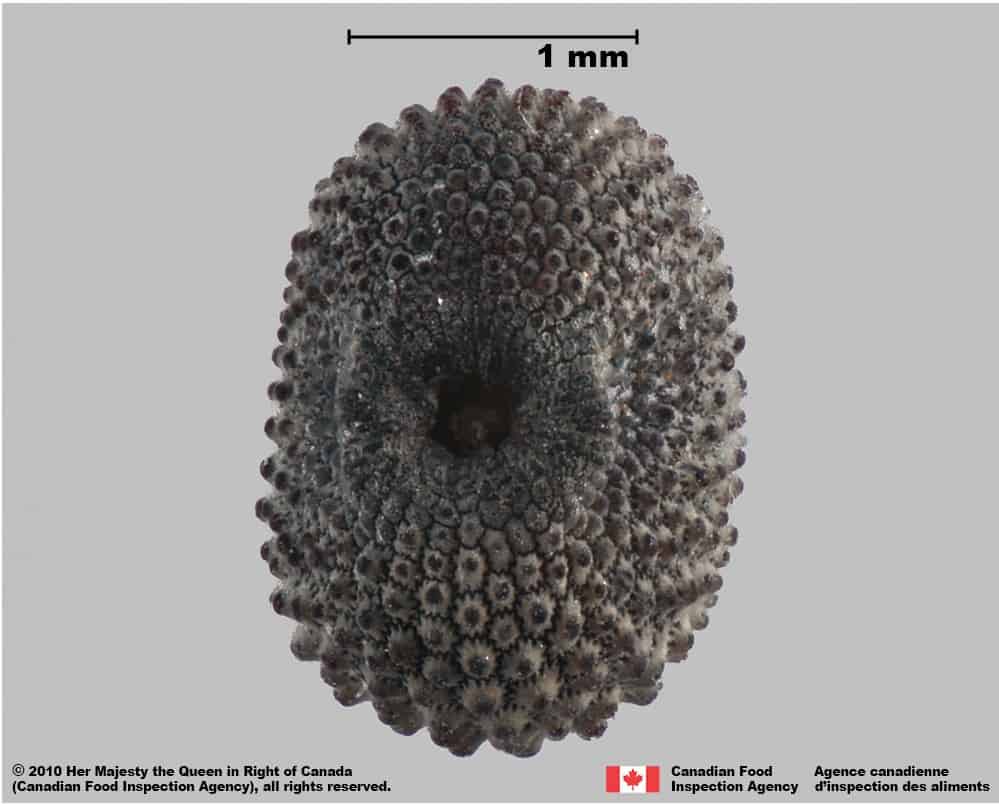
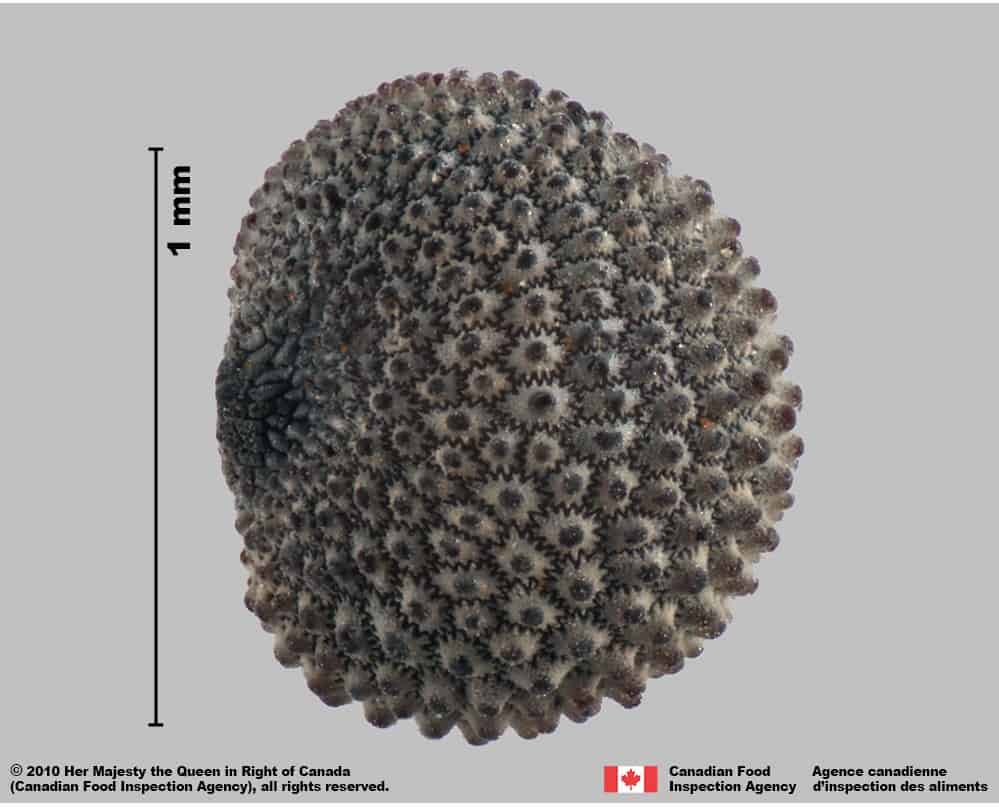
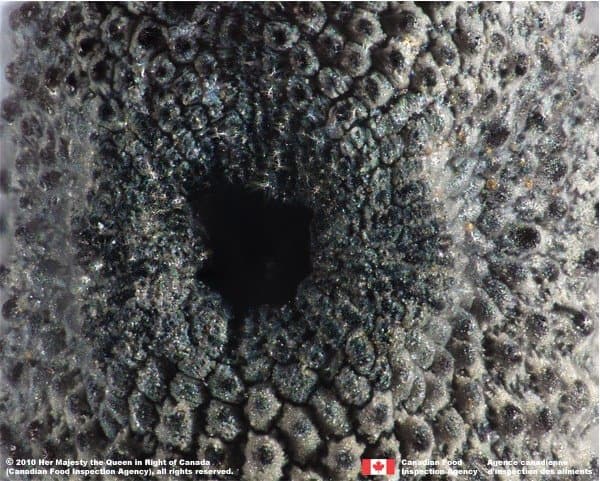
-
Embryo
Size
- Embryo partially fills the seed
Shape
- Embryo is curved, in a peripheral position
Endosperm
- Endosperm is translucent white coloured
Identification Tips
CONSEILS POUR L’IDENTIFICATION
There are 700 species of Silene worldwide, and 70 occur in North America (FNA 1993+). The seeds of these species are generally D-shaped with stellate grooved reticulation and papillate tubercles. Five species with large seeds are commonly encountered as field weeds in temperate climates: S. dichotoma, S. dioica, S.latifolia, S. noctiflora and S. vulgaris. Seed features that distinguish these species include: shape, tubercle arrangement, colour and raised areas around the hilum.
S. dichotoma seed is generally wedge-shaped, compressed in edge view, long reticulation interspaces, yellowish or reddish colour with two curved pads flanking the hilum. S. dioica seeds are D-shaped, inflated in edge view, with papillate tubercles in small interspaces. The surface is reddish coloured and the hilum is surrounded by a raised collar.
Seeds of S. latifolia are D-shaped, inflated in edge view, small reticulation interspaces, yellow or white coloured, with a raised collar around the hilum. S. noctiflora seed is D-shaped, compressed in edge view, long reticulation interspaces, reddish or yellow coloured with two small pads flanking the hilum. S. vulgaris seeds can be D- or wedge-shaped, compressed in edge view, with tubercles arranged in rows. The reticulation interspaces are a mix of square and rectangular shapes, grey, yellow or brownish coloured with two large pads flanking the hilum.

Silene latifolia (white cockle) seeds, hilum view





Additional Botany Information
AUTRES RENSEIGNEMENTS BOTANIQUES
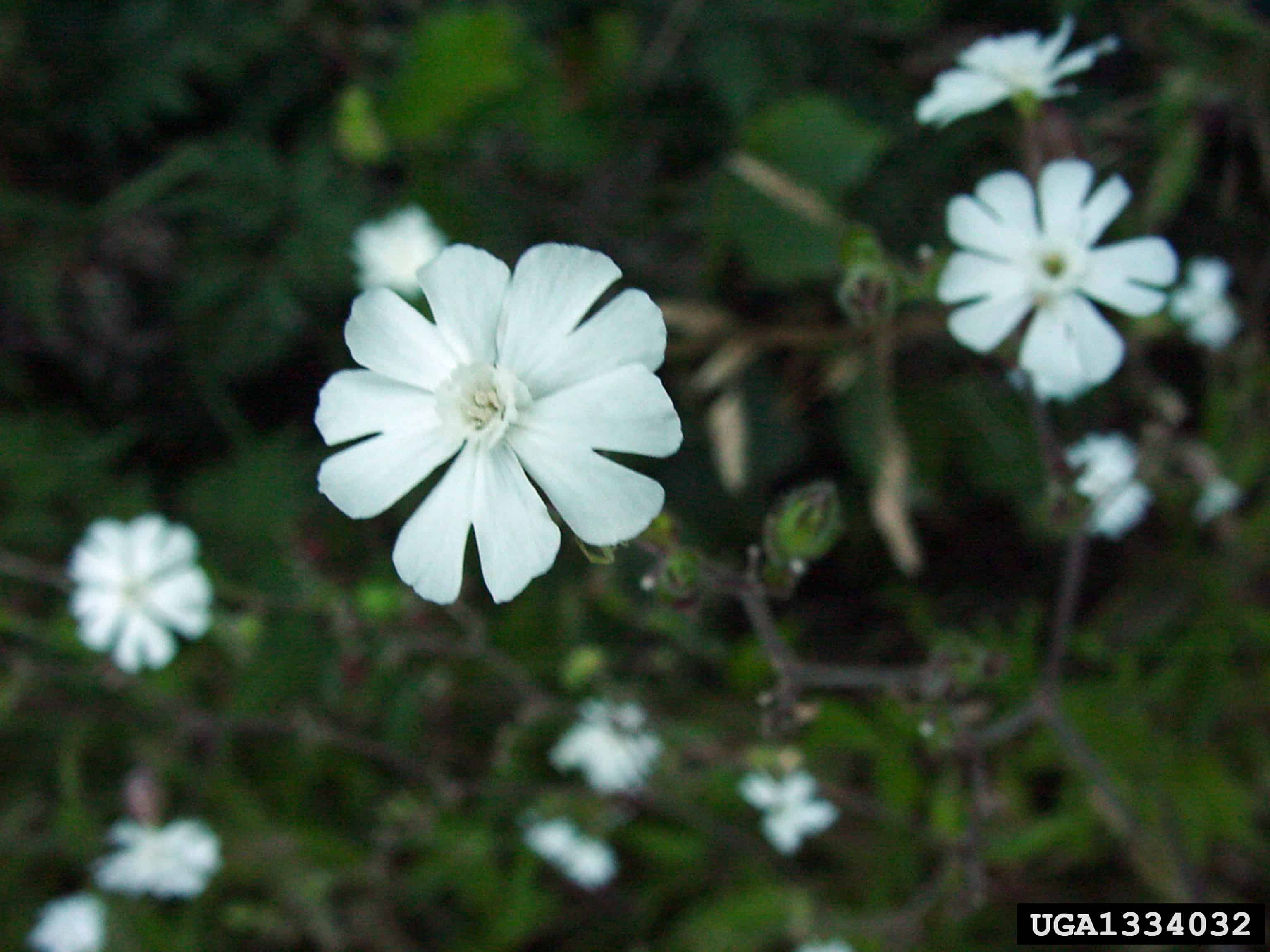
Silene latifolia flowers (Chris Evans, University of Illinois, Bugwood.org)


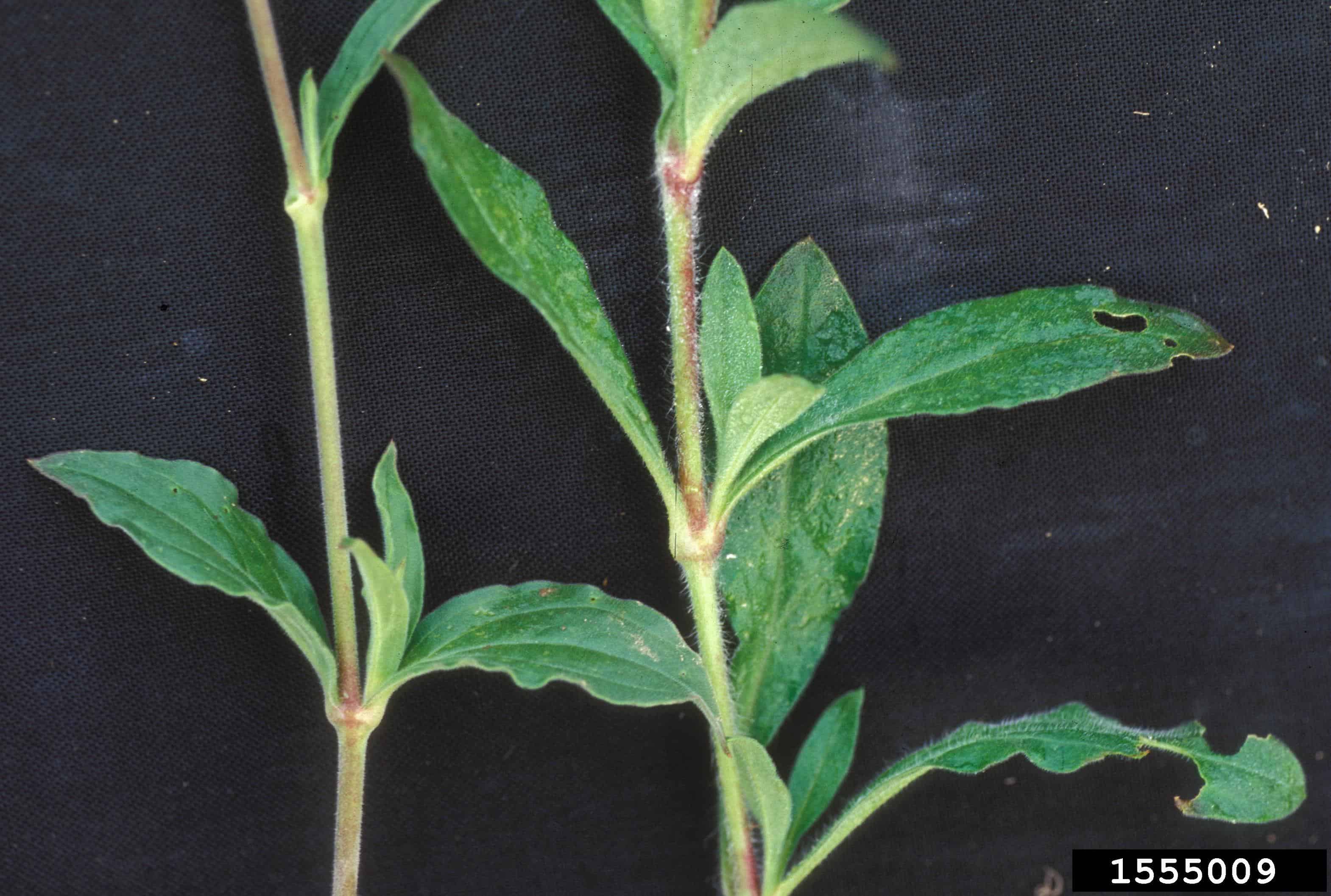
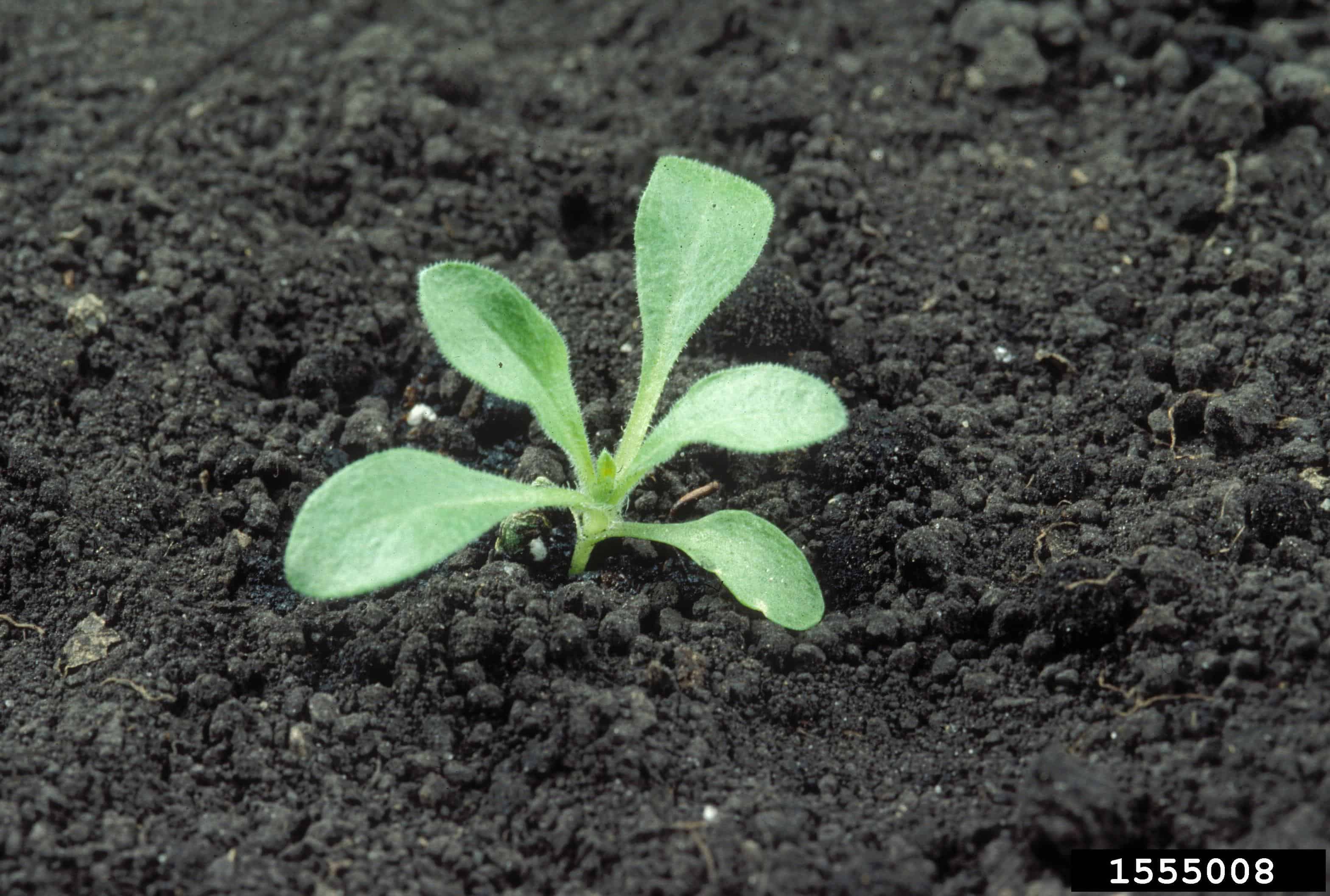
Similar Species
ESPÈCES SEMBLABLES
Similar species are based on a study of seed morphology of various species, and those with similar dispersal units are identified. The study is limited by physical specimen and literature availability at the time of examination, and possibly impacted by the subjectivity of the authors based on their knowledge and experience. Providing similar species information for seed identification is to make users aware of similarities that could possibly result in misidentification.
Silene noctiflora L. (night-flowering catchfly)
S. noctiflora seeds are generally smaller (length*: 0.9 – 1.3 mm; width: 0.8 – 1.1 mm), compressed in edge view, hilum with two small pads and dull yellow or dark red coloured. S. latifolia seed is inflated in edge view, hilum with a raised collar and yellow or white coloured.
Silene vulgaris (Moench) Garcke (bladder campion)
S. vulgaris seeds are generally larger (length*: 1.1 – 1.9 mm; width: 0.8 – 1.6 mm), compressed in edge view, hilum with two large pads and surface tubercles that are arranged in rows. S. latifolia seed is inflated in edge view, hilum with a raised collar, and randomly arranged tubercles.
*Note: minimum and maximum of 10 seeds in a normal range of this species using image measurement (ISMA 2020)
Click to select species
Cliquez pour sélectionner les espèces
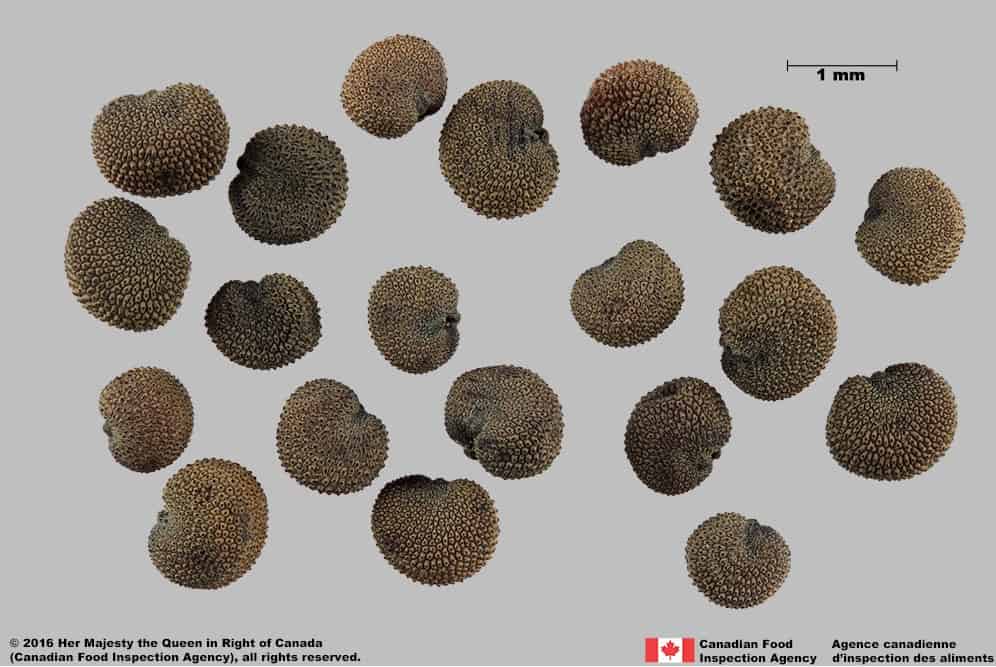
Silene noctiflora
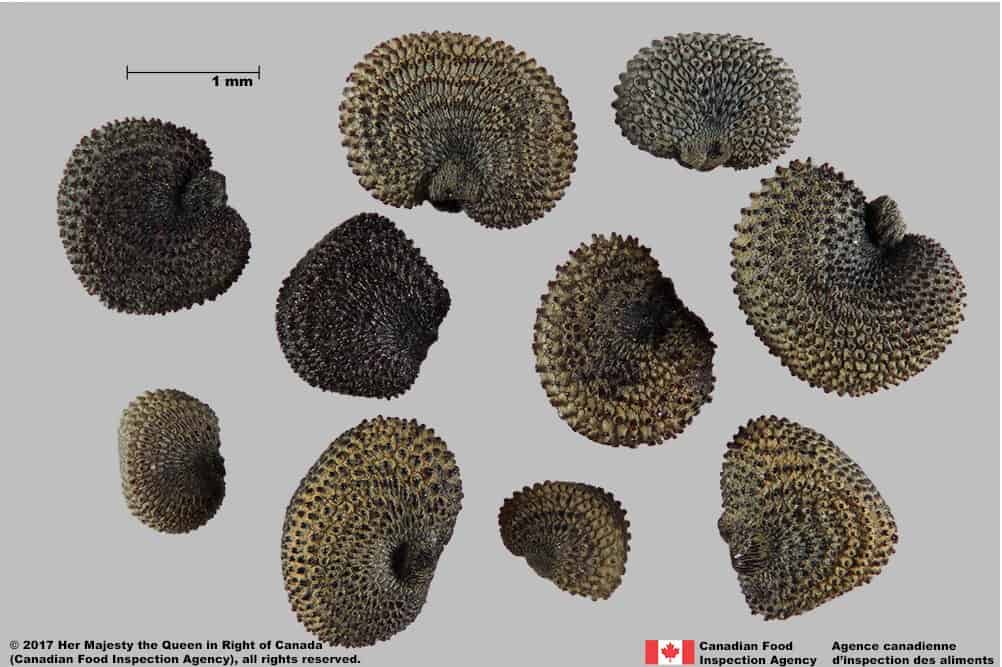
Silene vulgaris
Comparison Window
Fenêtre de comparaison
MAIN SPECIES
ESPÈCES PRINCIPALES
Silene latifolia

Silene latifolia
Caryophyllaceae
Silene latifolia (white cockle) seeds
MAIN SPECIES
ESPÈCES PRINCIPALES
Silene latifolia

Silene latifolia
Caryophyllaceae
Silene latifolia (white cockle) seeds
MAIN SPECIES
ESPÈCES PRINCIPALES
Silene latifolia

Silene latifolia
Caryophyllaceae
Silene latifolia (white cockle) seeds, hilum view
MAIN SPECIES
ESPÈCES PRINCIPALES
Silene latifolia
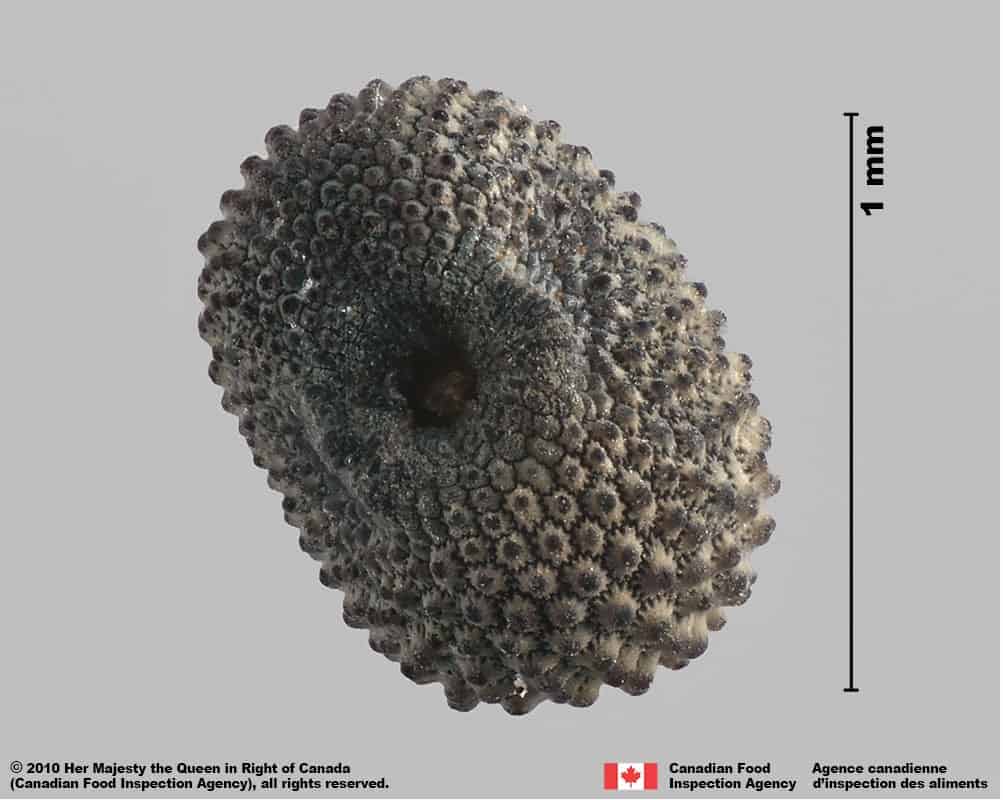
Silene latifolia
Caryophyllaceae
Silene latifolia (white cockle) seed
MAIN SPECIES
ESPÈCES PRINCIPALES
Silene latifolia

Silene latifolia
Caryophyllaceae
Silene latifolia (white cockle) seed, profile
MAIN SPECIES
ESPÈCES PRINCIPALES
Silene latifolia

Silene latifolia
Caryophyllaceae
Silene latifolia (white cockle) seed, hilum (close-up view)
SIMILAR SPECIES
ESPÈCES SEMBLABLES
Silene noctiflora

Silene noctiflora
Caryophyllaceae
Night-flowering catchfly (Silene noctiflora) seeds
SIMILAR SPECIES
ESPÈCES SEMBLABLES
Silene noctiflora
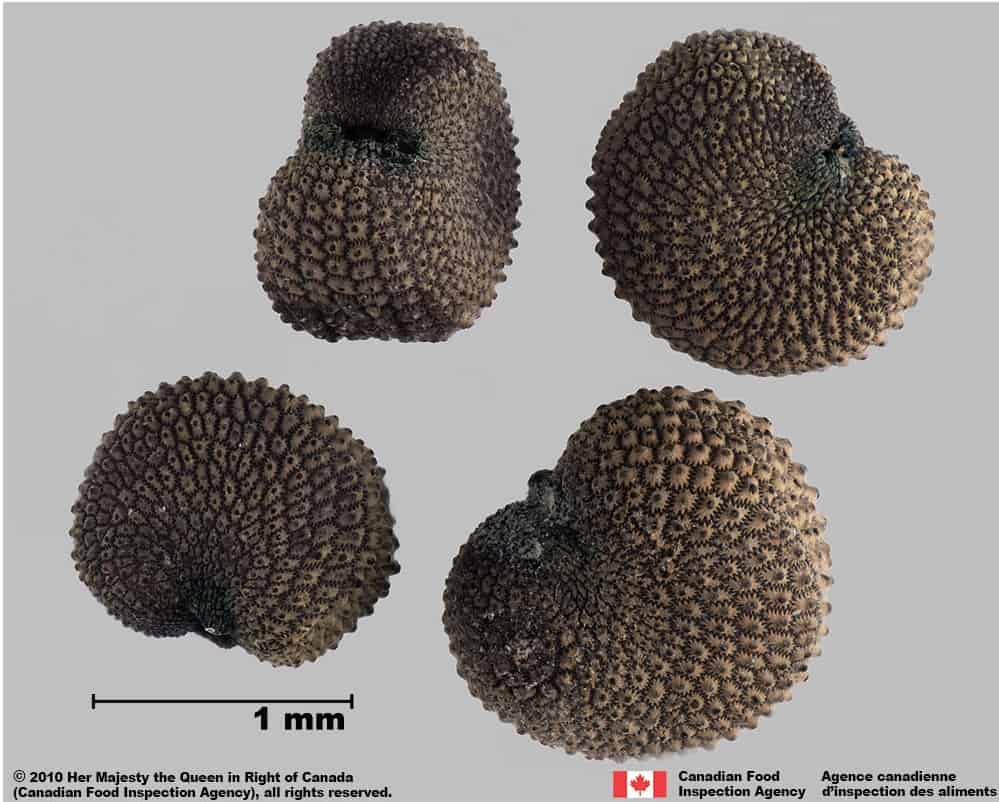
Silene noctiflora
Caryophyllaceae
Night-flowering catchfly (Silene noctiflora) seeds
SIMILAR SPECIES
ESPÈCES SEMBLABLES
Silene noctiflora
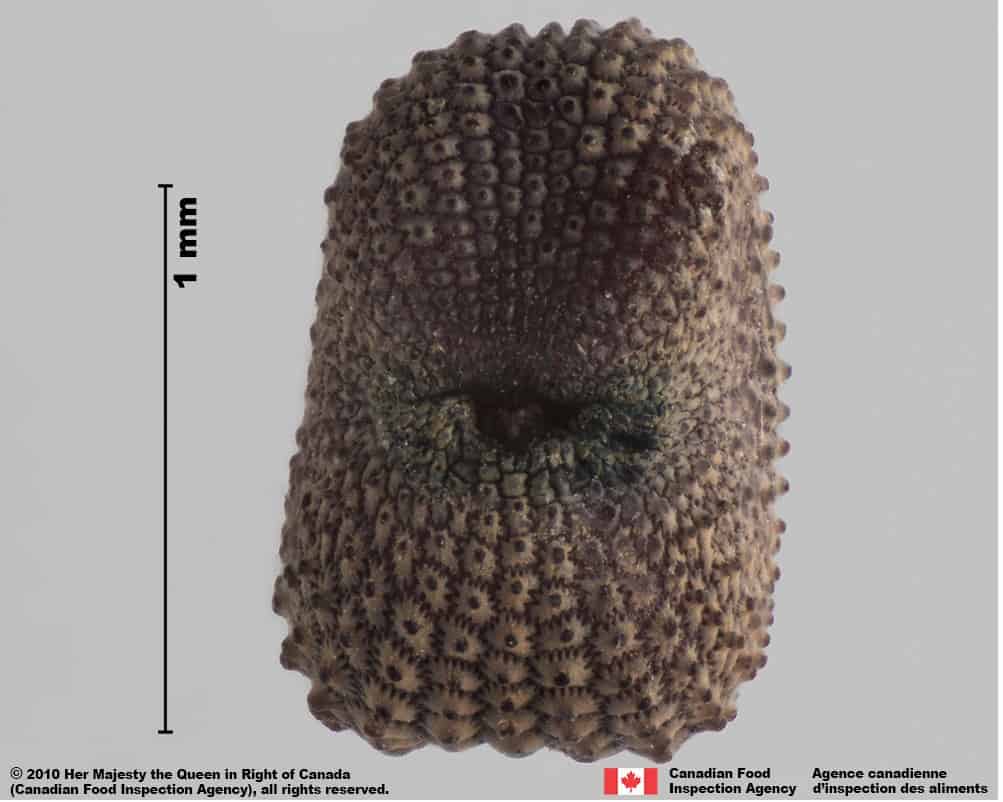
Silene noctiflora
Caryophyllaceae
Night-flowering catchfly (Silene noctiflora) seed, hilum view
SIMILAR SPECIES
ESPÈCES SEMBLABLES
Silene noctiflora
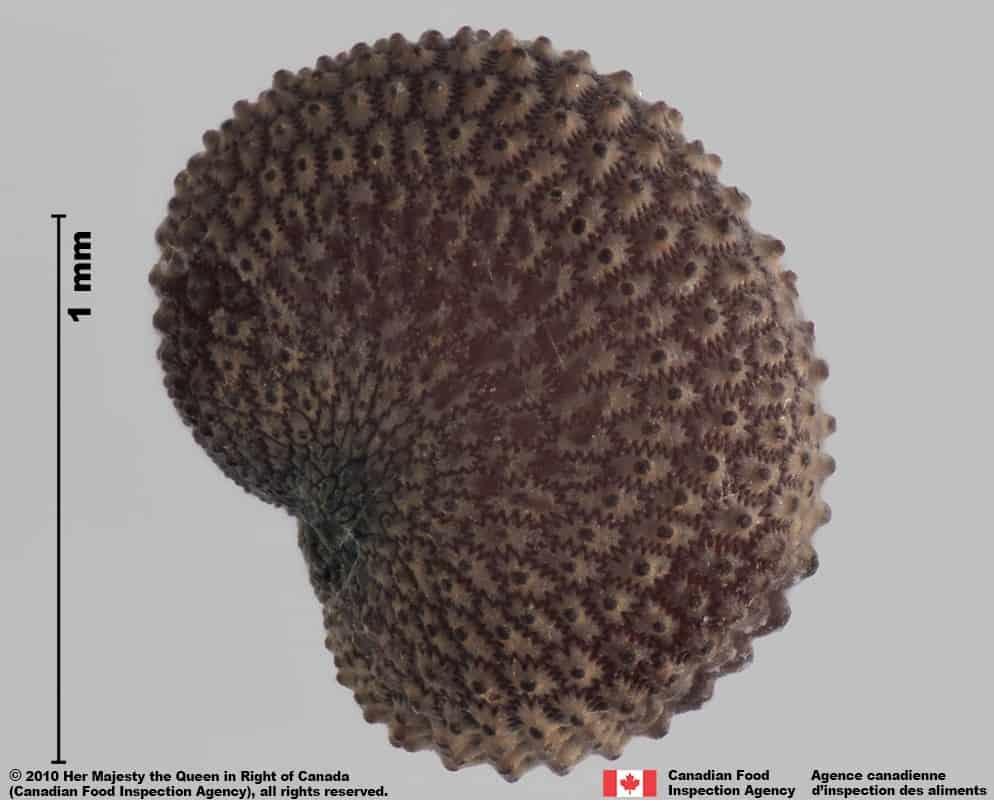
Silene noctiflora
Caryophyllaceae
Night-flowering catchfly (Silene noctiflora) seed, side view
SIMILAR SPECIES
ESPÈCES SEMBLABLES
Silene noctiflora
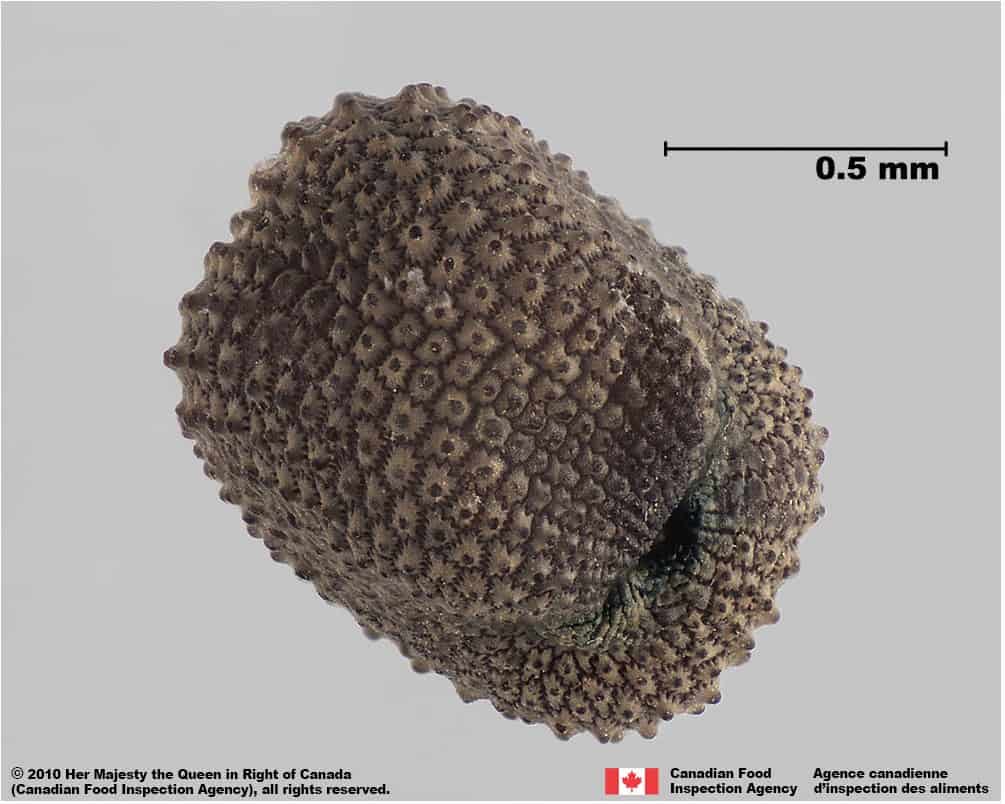
Silene noctiflora
Caryophyllaceae
Night-flowering catchfly (Silene noctiflora) seed
SIMILAR SPECIES
ESPÈCES SEMBLABLES
Silene noctiflora
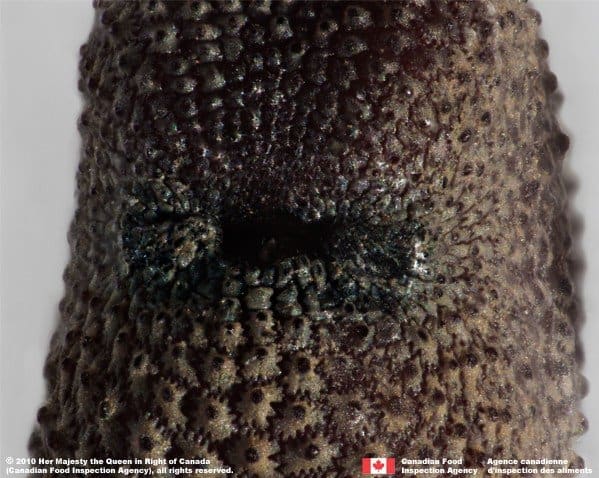
Silene noctiflora
Caryophyllaceae
Night-flowering catchfly (Silene noctiflora) seed, hilum (close-up view)
Need ID Help?
Besoin d’aide pour l’identification?
Reference(s)
Référence(s)
Brouillet, L., Coursol, F., Meades, S. J., Favreau, M., Anions, M., Bélisle, P. and Desmet, P. 2010+. VASCAN, the database of vascular plants of Canada. http://data.canadensys.net/vascan/ Accessed April 29, 2021.
Centre for Agriculture and Bioscience International (CABI). 2021. Invasive Species Compendium, CAB International, Wallingford, UK. https://www.cabidigitallibrary.org/journal/cabicompendium Accessed April 29, 2021.
Darbyshire, S. J. 2003. Inventory of Canadian Agricultural Weeds. Agriculture and Agri-Food Canada, Research Branch. Ottawa, ON.
Flora of North America (FNA) Editorial Committee, eds. 1993+. Flora of North America North of Mexico [Online]. 22+ vols. New York and Oxford. Accessed December 29, 2022.
Global Biodiversity Information Facility (GBIF) Secretariat. 2022. https://doi.org/10.15468/39omei Accessed via https://www.gbif.org/species/5586736 Accessed December 29, 2022.
Government of Canada (GC). 2016. Canadian Weed Seeds Order. https://laws-lois.justice.gc.ca/eng/regulations/SOR-2016-93/page-2.html (English) https://laws-lois.justice.gc.ca/fra/reglements/DORS-2016-93/page-2.html (French)
International Seed Morphology Association (ISMA). 2020. Method for Seed Size Measurement. Version 1.0. ISMA Publication Guide.
Kartesz, J. T. 2015. The Biota of North America Program (BONAP). North American Plant Atlas. Chapel Hill, N.C., www.bonap.org/MapSwitchboard.html Accessed April 29, 2021.
McNeill, J. 1977. The biology of Canadian weeds. 25. Silene alba (Miller) E. H. L. Krause. Canadian Journal of Plant Science 57: 1103-1114.
U.S. Department of Agriculture-Agricultural Research Services (USDA-ARS). 2021. Germplasm Resources Information Network (GRIN), https://npgsweb.ars-grin.gov/gringlobal/taxon/taxonomysimple.aspx Accessed April 29, 2021.
U.S. Department of Agriculture-Natural Resources Conservation Service (USDA-NRCS). 2021. The PLANTS Database. National Plant Data Team, Greensboro, NC USA. http://plants.usda.gov Accessed April 29, 2021.



